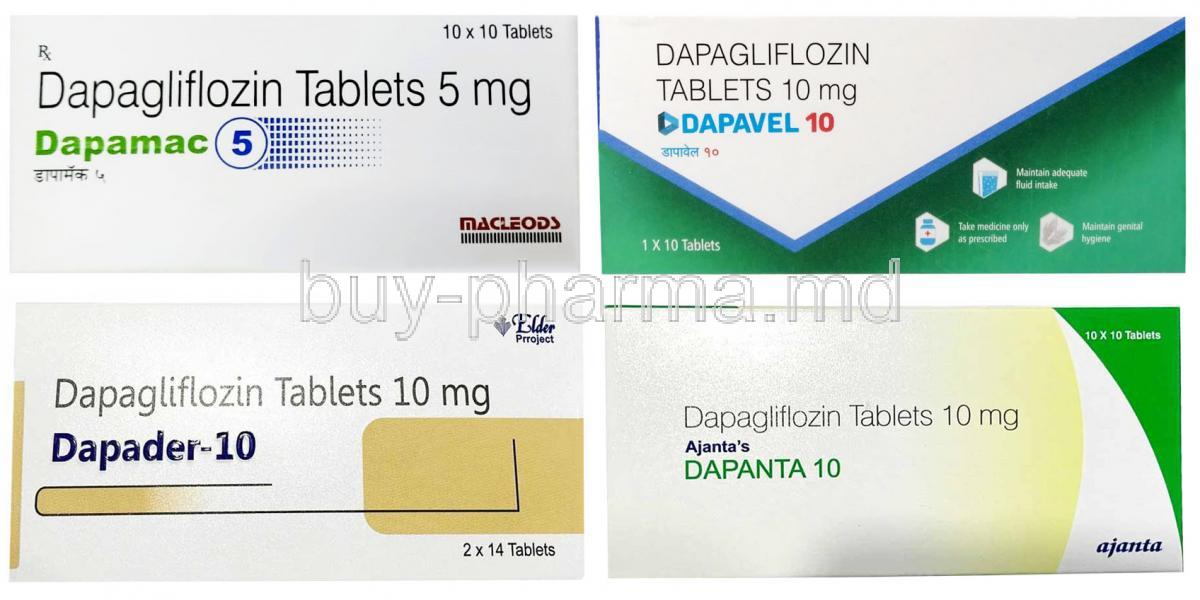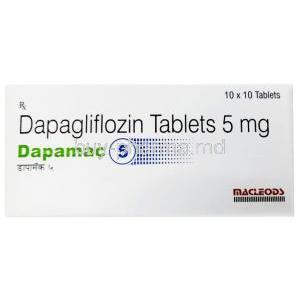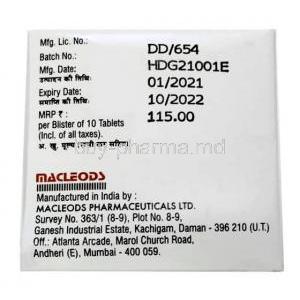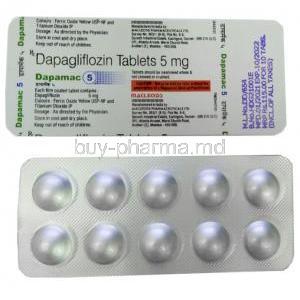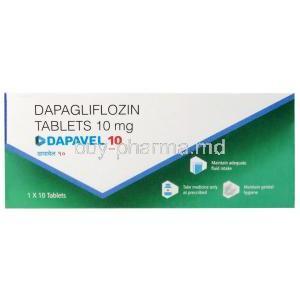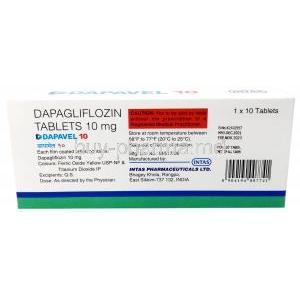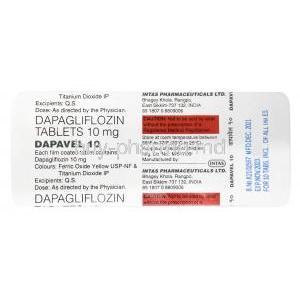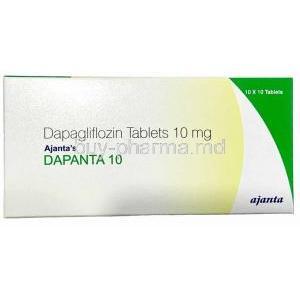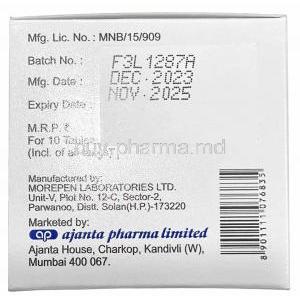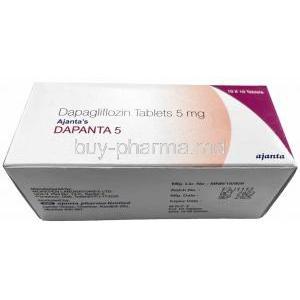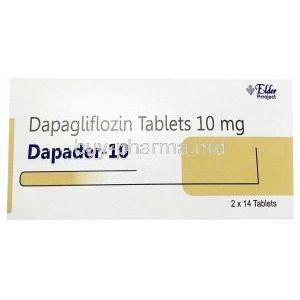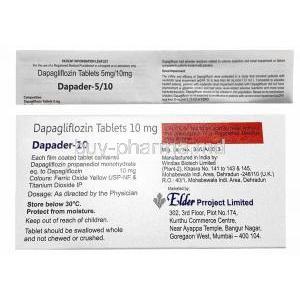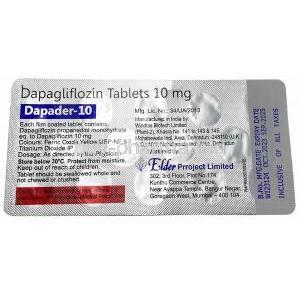Dapagliflozin
- I. Introduction to Dapagliflozin
- II. Composition of Dapagliflozin
- III. Mechanism of Action: How Dapagliflozin Works
- IV. Uses of Dapagliflozin
- V. Off-Label Use of Dapagliflozin
- VI. Common Side Effects of Dapagliflozin
- VII. Serious Side Effects and Warnings
- VIII. Dosage and Administration of Dapagliflozin
- IX. Interactions of Dapagliflozin With Other Medications
- X. Contraindications and Precautions
- XI. Special Considerations for Administration
- XII. Overdosage and Emergency Management
- XIII. Storage, Handling, and Disposal of Dapagliflozin
I. Introduction to Dapagliflozin
Overview of Dapagliflozin
Dapagliflozin, a drug belonging to the SGLT2 inhibitor group, represents a groundbreaking advancement in treating Type 2 diabetes. This exceptional medication blocks glucose reabsorption in the kidneys, leading to its removal and improving blood sugar levels.
Historical Development and FDA Approval
The evolution of Dapagliflozin from its inception to its application in clinical settings showcases the advancements in pharmaceutical research. Following testing in clinical trials, it gained approval from the FDA, marking a significant shift in diabetes treatment approaches.
The Role of Dapagliflozin in Modern Medicine
Dapagliflozin is becoming increasingly important in medicine not just for treating Type 2 diabetes but also for addressing heart failure and chronic kidney disease, highlighting its diverse range of therapeutic benefits.
II. Composition of Dapagliflozin
Active Ingredients
The main component, Dapagliflozin propanediol monohydrate, works directly on the sugar-excreting channels in the kidneys to lower high blood sugar levels.

Inactive Ingredients and Their Functions
The active ingredient in the medication is supported by inactive substances that help maintain the drug's effectiveness, improve absorption, and make it easier to take.
Formulation Variants and Their Applications
Dapagliflozin comes in strengths to suit different treatment requirements, showcasing its flexibility in real-world medical settings.
III. Mechanism of Action: How Dapagliflozin Works
Understanding SGLT2 Inhibitors
SGLT2 inhibitors, a type of diabetes medication, work by focusing on the glucose transporters in the kidneys to creatively lower blood sugar levels.
Dapagliflozin’s Effect on Blood Glucose Levels
By blocking SGLT2, Dapagliflozin reduces the reabsorption of glucose in the kidneys, resulting in a decrease in blood sugar levels.
Benefits Beyond Glucose Control
Besides controlling blood sugar levels, Dapagliflozin has also demonstrated kidney protective benefits, expanding its range of medical applications.
IV. Uses of Dapagliflozin
Dapagliflozin is a prescription medication primarily used alongside diet and exercise to treat type 2 diabetes. It is also employed in the treatment of heart failure. The US Food and Drug Administration (FDA) first approved Dapagliflozin in 2014. It belongs to the class of drugs known as sodium-glucose cotransporter 2 (SGLT2) inhibitors. These drugs help control glucose (blood sugar) levels by increasing the amount of glucose removed from the body through urine. Additionally, Dapagliflozin reduces the strain on the heart by facilitating blood circulation 1.
V. Off-Label Use of Dapagliflozin
Exploring Emerging Applications
-
Non-Alcoholic Fatty Liver Disease (NAFLD): Preliminary research suggests that Dapagliflozin might benefit patients with NAFLD by reducing liver fat accumulation and improving liver function.
-
Heart Failure with Reduced Ejection Fraction (HFrEF): Although Dapagliflozin is officially approved for heart failure, its use in HFrEF patients without diabetes is considered off-label. Clinical trials have shown promising results in terms of reducing hospitalizations and improving outcomes.
-
Chronic Kidney Disease (CKD): Dapagliflozin’s effects on renal function have led to its exploration in CKD management, even in patients without diabetes. It may slow the progression of kidney disease.
VI. Common Side Effects of Dapagliflozin
Minor Side Effects and Management Strategies
- Nausea and dizziness can sometimes be temporary and can usually be controlled by adjusting the dosage.
- When dealing with fungal infections it's important to maintain good hygiene practices.

Addressing Dehydration and Genital Infections
To avoid dehydration, it's important to drink fluids. Similarly, it's crucial to seek treatment for genital infections to prevent any complications.
Monitoring for Urinary Tract Infections
It's advisable to undergo checks for urinary tract infections to prevent any potential kidney issues.
VII. Serious Side Effects and Warnings
Risk of Diabetic Ketoacidosis
Patients need to be well informed about the signs of diabetic ketoacidosis due to the higher risk involved.
Kidney Function and Dapagliflozin
It is crucial to check kidney function to identify any negative impacts on renal health quickly.
Considerations for Lower Limb Amputation
Although not common, it's important to evaluate the condition of the blood vessels in the legs due to the potential risk of needing an amputation.
VIII. Dosage and Administration of Dapagliflozin
Recommended Dosages for Different Conditions
The ideal dosage varies depending on the patient's unique treatment requirements and underlying health issues.
Dosage Adjustments and Considerations
Changes might be needed for kidney issues or when using diabetes medications simultaneously.
Administration Tips for Optimal Efficacy
Starting the day with Dapagliflozin could potentially improve how well it works and how likely patients are to stick to their treatment.
IX. Interactions of Dapagliflozin With Other Medications
Common Drug Interactions and How to Manage Them
When a patient starts taking Dapagliflozin, it's important to consider how it interacts with other medications they are taking. Diuretics, insulin, and other drugs for blood sugar may need dose adjustments to prevent low blood sugar or dehydration. Healthcare providers need to be attentive, in modifying treatment plans to ensure the medication works effectively while reducing any impacts.
Dapagliflozin and Alcohol: What Patients Should Know
Drinking alcohol can make the diuretic effect of Dapagliflozin worse, which could result in dehydration or low blood pressure. It is recommended for patients to be mindful of their alcohol consumption and watch out for signs of blood sugar, especially in situations where alcohol is being consumed socially.
Impact on Other Diabetic Medications
Dapagliflozins' distinct way of working enhances diabetes therapies, but it is crucial to adjust the dosage carefully. The combined therapeutic effect should be used wisely to make sure that adding Dapagliflozin doesn't disrupt the tuned blood sugar control established with current medications.
X. Contraindications and Precautions
Absolute Contraindications for Dapagliflozin Use
Patients who have experienced allergic reactions to Dapagliflozin or any of its components, those with notable renal issues, or individuals undergoing dialysis should refrain from taking this medication. It is crucial to be aware of these contraindications to prevent any adverse reactions.
Precautions for Specific Populations
- Elderly Patients: The older population may experience heightened sensitivity to the effects of Dapagliflozin, requiring dosing and close monitoring for signs of dehydration and decline in kidney function.
- Pregnant Women and Nursing Mothers; The safety of using Dapagliflozin during pregnancy and breastfeeding is still not clearly understood so it's best to avoid using it in these groups unless the benefits significantly outweigh the risks.
- Pediatric Use; Safety and Effectiveness: Dapagliflozin is not recommended for use in children under 18 years old due to data on its safety and effectiveness in this age group.
XI. Special Considerations for Administration
Careful Administration to Patients with Renal Impairment
The functioning of the kidneys plays a role in determining the appropriate dosage and application of Dapagliflozin. It is important to evaluate kidney function, and adjustments to the dosage, or even discontinuation may be necessary for individuals experiencing deterioration in renal health.
Adjustments for Patients with Liver Disease
While Dapagliflozin is mostly eliminated through the kidneys, it's important to assess patients with liver issues before starting treatment, making sure that any liver problems won't have a big impact on how the drug works or its safety.
Monitoring and Management Strategies for At-Risk Populations
Customizing monitoring procedures and management plans for groups like individuals with a record of genital infections or a surgical background linked to weight loss surgeries is crucial for enhancing treatment effectiveness and reducing potential risks.
XII. Overdosage and Emergency Management
Signs and Symptoms of Dapagliflozin Overdose
Taking too much Dapagliflozin can lead to increased drug effects like low blood pressure, lack of hydration, and imbalances in electrolytes. It's important to identify these symptoms for prompt treatment.
Immediate Steps and Treatment Options
In case of an overdose, it is crucial to start supportive measures, paying close attention to restoring fluid and electrolyte balance. Hospitalization might be required for instances to guarantee thorough medical supervision.
Preventive Measures and Patient Education
Ensuring that overdose is avoided involves patient instruction regarding the accurate dosage schedule, the significance of following prescribed doses, and the possible dangers associated with altering the dosage independently.
XIII. Storage, Handling, and Disposal of Dapagliflozin
Proper Storage Conditions to Ensure Drug Potency
Dapagliflozin should be stored at room temperature, away from direct sunlight and moisture, to preserve its pharmacological efficacy. The integrity of packaging should be maintained to protect the medication from contamination.

Safe Handling Practices for Caregivers and Patients
To reduce the chances of skin exposure, it's important to handle medications with hands and avoid touching broken tablets directly. Caregivers should be informed about these practices to uphold safety standards.
Disposal Guidelines to Prevent Misuse and Environmental Harm
Proper disposal of expired or unused Dapagliflozin is important to prevent misuse and reduce its environmental impact. Following regulations and guidelines, for disposal is crucial and utilizing pharmaceutical take back programs is a safe and responsible way to dispose of it.

